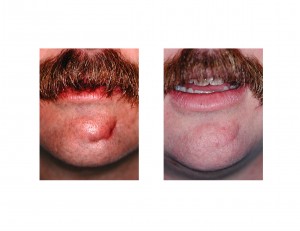
ALTERNATIVES
Alternatives for improving the appearance of a scar could include more time for scar maturation, dermabrasion, laser resurfacing, injectable fillers, fat injections, collagen and stem cell injections and the use of make-up for camouflage.
GOALS
The goal of scar revision is to improve the appearance of the scar(s). This could include physical changes such as narrowing, correction of depressed or elevated surface contour, red or brown color reduction, or line of scar direction.
LIMITATIONS
The limitations of scar revision is in how much the appearance of the scar can be actually improved. Age of the scar, the scar pattern, where on the face or body the scar is located and the patient’s skin color and elasticity all play a factor in limiting how well the appearance of the scar can be improved.
EXPECTED OUTCOME
Expected outcomes include the following: temporary swelling and bruising around the scar revision site, temporary numbness of the surrounding skin, temporary increased redness or discoloration of the scar, elevation/firmness of the scar, and that it can take up to one year after scar revision to see the final result. It is important to understand that no scar can be completely removed and scar revision is about scar reduction not scar elimination.
RISKS
Significant complications from scar revision are very rare. More likely risks include infection, wound separation, suture reactions, worsening of the appearance of the scar, and failure of long-term scar improvement. Any of these risks may require revisional surgery for improvement.
ADDITIONAL SURGERY
Should additional surgery/therapies be required to do additional surgical scar revision, laser resurfacing, pulsed light treatments or topical scar therapies, these will generate additional costs


